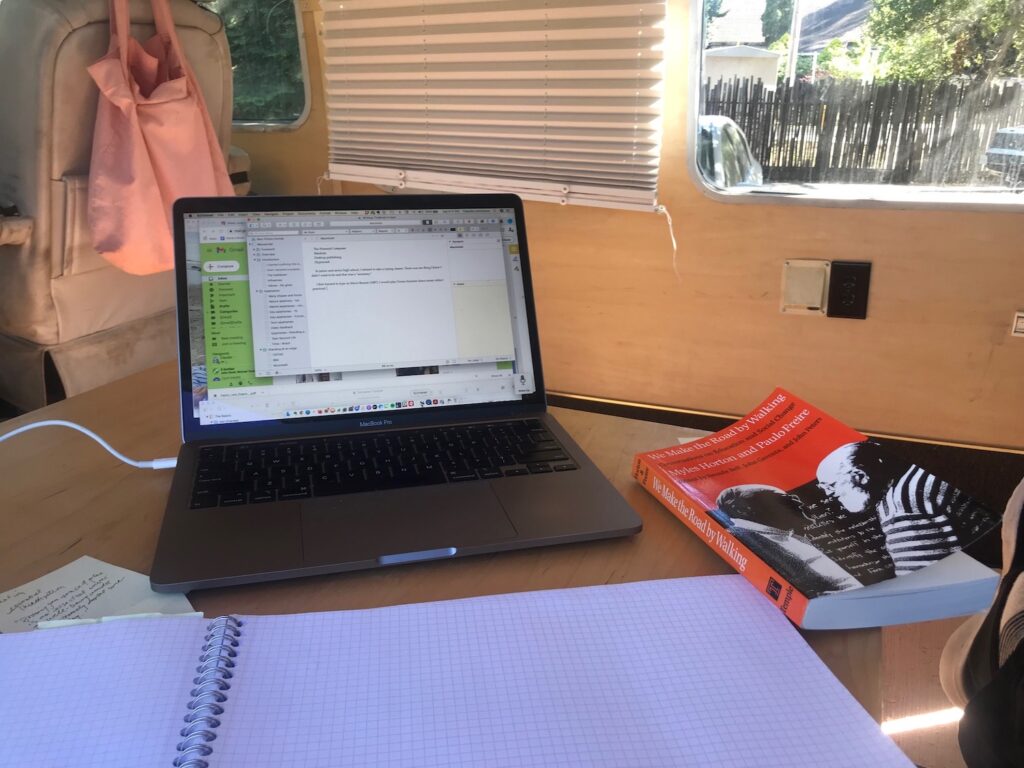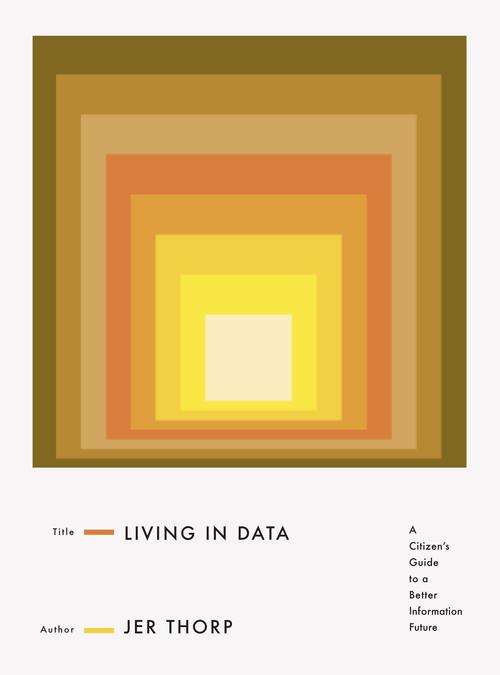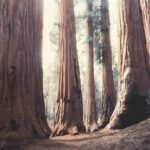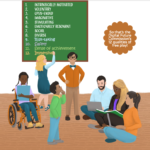
I read and reread A LOT of books over the last six months when I was in my 4-day biweekly writing retreat sessions. I had few distractions (which was one of my primary motivations—it took a lot of dedication to pack and make the trek every other week).
In the vintage Airstream, I only had my laptop and a few paper notebooks, Post-it notes, and pens, for tools. At home, I have something close to a holodeck—with dual screens allowing me twice the space to open browser tabs, and travel down tangents. Tangents can be awesome, but if it’s too hard to get back from the explorations, and I’m exhausted when I do return, I will never write, much less complete, a book. The work of outlining and writing a book requires a different mode of mind.
When I am working in the digital environment, in research mode, tabs somehow mate and exponentially reproduce.
In my minimalist retreat set-up, I found myself better able to focus and refocus when I did get distracted by something shiny. One of my retreat weekends, I decided not to travel due to a massive rainstorm heading in. But I still wanted to reduce the myriad distractions of home and get some writing done.
I tried bringing some of the retreat to daily life—I turned off my monster monitor and worked on my laptop alone. Certainly, it was not the same as working in the Airstream. But it helped a lot to keep my focus and actually get writing (and strategic reading) done despite the different habits cultivated (consciously and unconsciously) in my work-from-home and pandemic-Zoom-hermit life.

So back to those books I read as research…out of the many, I had one favorite of all—Living in Data: A Citizen’s Guide to a Better Information Future by Jer Thorp (thanks for recommending it, David Cole). Jer was the New York Times’ first Data Artist in Residence, the Library of Congress Innovator-in-Residence (2017–2018), and he’s a National Geographic Explorer, just to name a few of the hats he wears.
I recommend that you read this book. Well, actually, I urge you to read this book to evolve your own consciousness around data, and for the sheer inspiration that Jer brings. Think awe.
And to warm up for the book, watch this conversation with Jer on the Harvard Discovery Series. He talks a lot about his relationship to the natural world. Here’s a description:
In this talk Jer will propose a variety of answers to a crucial question of our time: how do we stop passively inhabiting data, and become active citizens of it?
We are all living in data—pandemic statistics, mask data, political data, economic data, biodiversity data, climate change data. In the book, Jer dives deep into some of the extraordinary and moving data projects he has done—projects like Into the Okavango—a live data expedition in the Okavango Delta (2013), the Map Room—a community space for data exploration through map making (2017), and Herald Harbinger—a permanent public data sculpture linking a city to a glacier (2018). Jer is a gifted storyteller, bringing extremely relevant data to life.
I encourage you to read Living in Data, read it aloud in your families and classrooms, read it in your book clubs, and explore how to engage with the often overwhelming data in our lives. In 2022, get your head and heart in data.
Resources for data practice
Citizen science is a powerful vehicle for hands-on data practice. I found this post from Australia’s The Conversation on students, insects, and citizen science:
Take a closer look: how more students are catching the citizen science bug
I’ve written about Citizen Science here on the Mindful Digital Life blog. Here’s one from the archives:
Citizen Science—hands-on & participatory
Take good care, everyone. I’ll be back with a new post on Monday, January 24.


